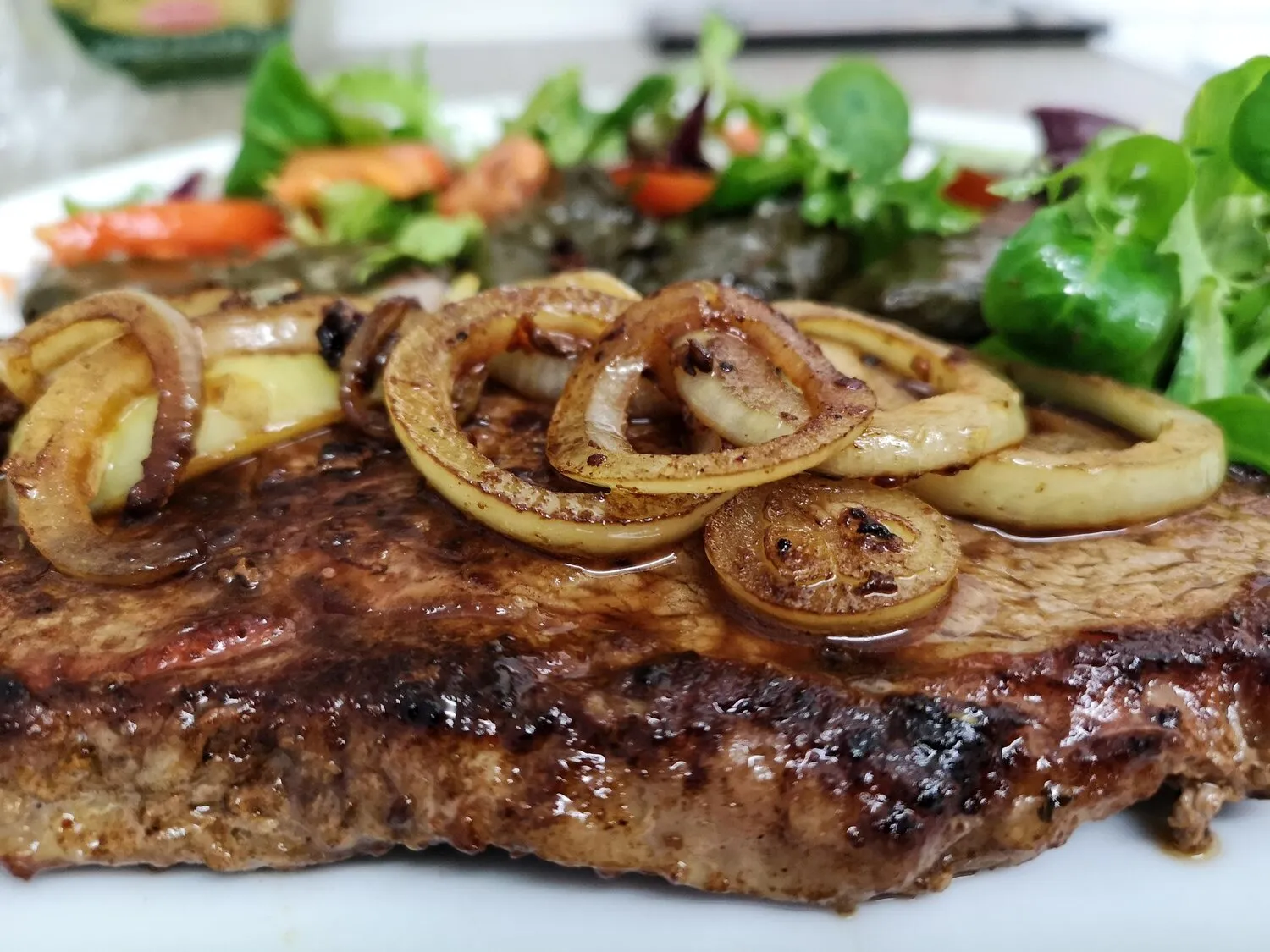
Bife Acebolado
Steak with onions, served with rice and beans.
Nutrition Facts
* The % Daily Value (DV) tells you how much a nutrient in a serving of food contributes to a daily diet. 2,000 calories a day is used for general nutrition advice.
Restaurante Dona Graça
Bife Acebolado reflects the historical blending of European (particularly Portuguese) and indigenous Brazilian culinary traditions. The introduction of cattle by the Portuguese settlers, combined with indigenous staples like rice and beans, laid the foundation for this simple yet satisfying dish. The use of onions likely stems from Portuguese cooking influences.
Bife Acebolado is a staple in Brazilian cuisine, representing home-style cooking and comfort food. It's a dish often enjoyed at family meals and 'botecos' (casual bars/restaurants), showcasing its widespread appeal and accessibility.
Everyday Meal
Bife Acebolado is not typically considered a celebratory dish but rather a common, everyday meal option. It is easily prepared and affordable, making it a regular part of the Brazilian diet.
Boteco Staple
You'll find Bife Acebolado on the menu of nearly every 'boteco' in Brazil. Often served as a 'prato feito' (ready-made plate) with rice, beans, and sometimes fries or farofa, it's a quintessential boteco offering.
Regional Variations
While the basic components remain the same, regional variations may exist in terms of seasoning, the type of steak used, and the accompanying side dishes. Some regions may add peppers or tomatoes to the onions.
Bife Acebolado offers a savory and comforting flavor profile, primarily driven by the beef's umami richness balanced by the sweetness and slight sharpness of the caramelized onions. The accompanying rice and beans provide a neutral base, enhancing the overall experience.
The primary flavors are beefy and savory from the steak. The onions, cooked until softened and slightly caramelized, provide sweetness and a contrasting texture. Seasoning typically includes salt, pepper, and garlic, sometimes paprika or cumin. The rice offers a clean, subtle flavor, while the beans contribute an earthy, slightly creamy taste depending on the variety and preparation method (e.g., black beans, pinto beans, with or without bacon/smoked meats).
Steak Selection
Choose a tender cut of beef like sirloin (contrafilé) or ribeye (filé de costela). Thinner cuts cook quickly and are less likely to become tough.
Onion Caramelization
Don't rush the onions! Cook them slowly over medium-low heat until they are deeply golden and sweet. This takes time and patience.
Perfect Steak Sear
Ensure your pan is hot before adding the steak to achieve a good sear. This creates a flavorful crust and helps to seal in the juices.
Resting the Steak
Allow the steak to rest for a few minutes after cooking before slicing. This helps the juices redistribute, resulting in a more tender and flavorful steak.
Explore additional Brazilian dishes and restaurants
Explore BrazilianDiscover top dining spots and culinary experiences in Cajamar.
Explore CajamarLearn more about the food culture, restaurant scene, and culinary heritage of Brazil.
Explore Brazil